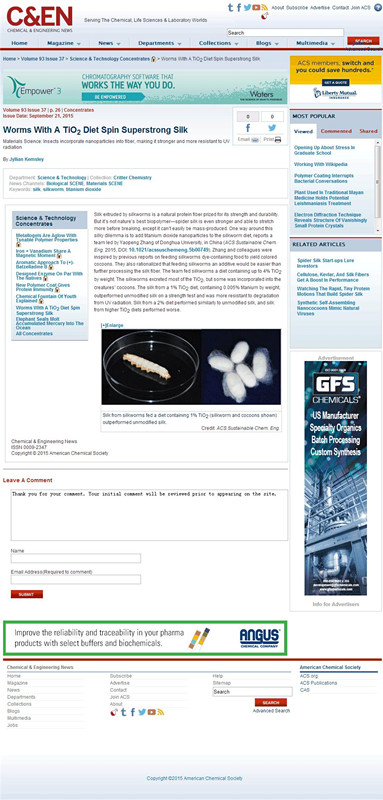For several years the team led by professor Zhang Yaopeng and Shao Huili from MaterialSchool has focused on the research on silkfibroin modification. Recently through feeding silkworms a diet containing TiO2, the team has successfully got natural silk whose strength and resistance to UV radiation were greatly improved. This method has the following advantages: low cost, easy to operate and environmentally-friendly. As a result, it would be of great significance to the industrialization of mass production of silk with high performance.
On September 21, the Chemical & Engineering News in
Founded in 1923, the Chemical & Engineering News is a critical magazine in the world’s chemistry and chemical engineering field and mainly reports the latest achievements, hot spots and issues in the field.
According to the report, silk is a natural protein fiber prized for its strength and durability. But it’s not the best in the nature- spider silk is even stronger and able to stretch more before breaking, except it can’t easily be mass-produced. Therefore, the modification of silk becomes especially important. Through feeding silkworms a diet containing TiO2, the team led by professor Zhang Yaopeng from MaterialSchool has successfully reached the goal.
In early September, the project paper-Reinforced and Ultraviolet Resistant Silks from Silkworms Fed with Titanium Dioxide Nanoparticles, was published online on the ACS Sustainable Chem.




